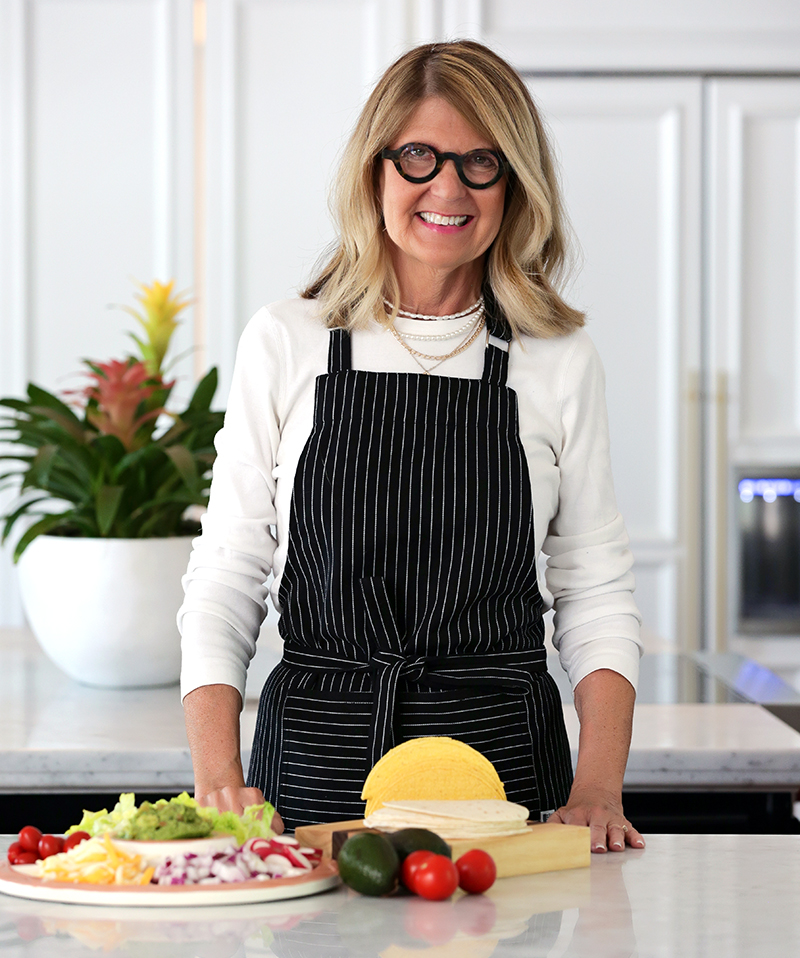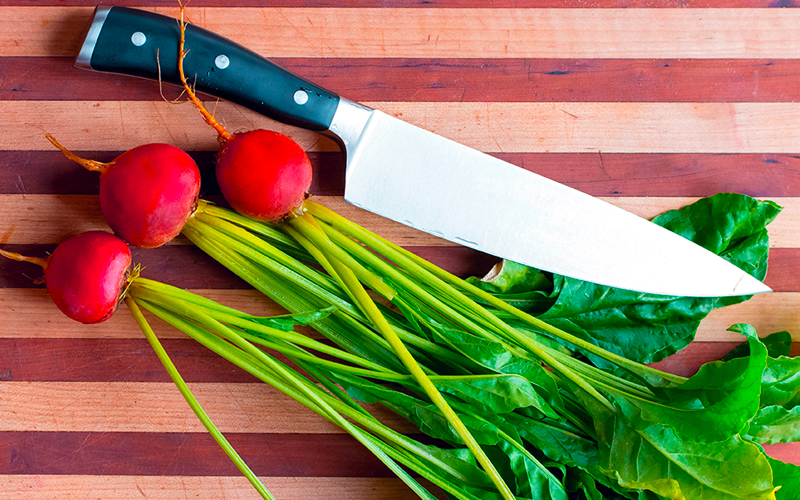
Too many cooks won’t spoil the broth as long as you follow a few points of kitchen etiquette
My friend Marsha Ramsey returned recently from a three-month stint volunteering with World Central Kitchen in Przemysl, Poland, eight miles from the Ukrainian border, helping to provide emergency food relief to refugees. She worked 12-hour shifts in a kitchen that produced as many as 30,000 meals a day for hungry, devastated people. Although the volunteers were there for a terrible reason and the work was exhausting, she says the kitchen was a miraculous place to be. The volunteers, gentle people from all over the world, found instant affinity amongst themselves and the people they were helping. A few volunteers were celebrity chefs who had checked their ego at the door, just there to help. Marsha’s fellow volunteers took to calling her “Clyde” after Rachel Ray told her she worked as hard as a Clydesdale.
Although I don’t have Marsha’s stamina (few do), when she told me about the WCK kitchen in Poland, I felt an urge to go there myself. It reminded me that some of the best times of my life have been spent cooking in one kitchen or another with family and friends. This is not to trivialize the humanitarian work of the WCK by comparing it to people cooking together for a dinner party. But human beings like to be part of something larger than themselves, even if it’s just chopping parsley for a dinner party. Here then are a few thoughts about how to have a good time cooking with friends in the kitchen.
“What Can I Do to Help?”
It’s the universally asked party-guest question. I used to suppose the offers were half-hearted and discourage guests from helping me in the kitchen. Then I slowly realized most people—even those who are inept kitchen help—are happy to be asked to do some little thing.
Giving your guests small tasks is a great way to make them feel connected to the party. But nobody wants to work too hard. It’s best to have everything done that can be done before the doorbell rings, and then make assignments of the little last-minute tasks. For me, those tasks usually are the things on my party to-do list that I just couldn’t get to.
When you give a guest a job, make sure he or she has a fresh drink, and get the music cranked up in the kitchen. Give them the tools they need. If you ask them, say, to chop some chives, don’t make them root around your kitchen for a knife and cutting board. And always make sure they know where the trashcan is.
Be a Kitchen Sponge
Julia Child said that “the more you learn about food, the more you understand how little you know.” I always learn something when I help a friend serve dinner in his or her kitchen. Everybody has their own little tricks to share, and I try to absorb them like a sponge. A couple of weeks ago I went to a dinner party where roasted asparagus was served diagonally arranged on a vintage silver platter and festooned with nasturtiums. (Yes, they’re edible!) It was so beautiful, so simple, so doable.
Beware the Golden Triangle
My friend Kathy Kelly designs swanky kitchens. She uses a term called “the golden triangle.” It’s the area containing the stove, refrigerator, and sink. In any well-designed kitchen, says Kathy, none of the three elements of the triangle should be less than four and more than nine feet apart.
To me, the lessons of the golden triangle are twofold. Lesson one is you don’t need a big kitchen to work efficiently. In fact, I can think of a few kitchens that are a little inefficient because they are so big. Then again maybe I’m just envious.
Lesson two: if you are a guest and you are not helping, stay outta the golden triangle. Women seem instinctively to know this. Men, on the other hand, gravitate straight to the triangle and plop themselves right in front of the sink, and you have to brandish a pry bar to get them to move.
Synergistic Dinner Parties
Here are a couple of dinner party themes that work wonderfully for cooking with friends. These are good menu solutions particularly when your guests include vegetarians or finicky eaters. Because they facilitate interaction, these dinners are also good when you have guests who don’t know each other. And they are easy on the hosts because everyone brings something.
Style-your-own pizza party: I use Boboli crusts, but if you’re of a mind, you could make your own pizza crust, or use Trader Joe’s ready-to-go pizza dough.
I ask everyone to bring an assigned topping or two—some commonplace, like diced green peppers, others more exotic, like chopped figs, then I supply some toppings myself. Before the party I make little signs identifying each topping, because people like to know what they are eating. Displaying all the toppings next to the correct signs requires a few extra hands in the kitchen; it’s a fun, quick project for a couple of helpers.
Important note: put toothpicks out and ask everybody to use them to do some clever thing to identify their pizza, because when they come out of the oven, the pies all look alike.
Build-your-own taco party: This is perfect for the summer months when tomatoes and avocados are at their best. In addition to taco meat, you can offer proteins, such as fish, pulled pork, or shredded chicken. I provide the Old El Paso Stand ‘n Stuff taco shells as well as flour tortillas. You also can offer—or ask guests to bring—interesting ingredients like arugula, chopped mangoes, and chipotle sauce. But again, identify ingredients with some sort of little signs.
One can get tacos or pizzas anywhere, so to make the eating experience memorable, you want to have some special ingredients. For presenting the ingredients, it’s also nice to have an assortment of small serving bowls and little serving spoons and tongs. Start collecting them at art fairs and flea markets, and you’ll have a lovely mix in no time.
Email me for lists of suggested taco and pizza ingredients, along with menu and serving suggestions.
Postscript: More about Marsha’s Time on the Polish Border
When Marsha wasn’t working in World Central Kitchen, she spent her time helping the refugees get much-needed items, such as suitcases, clothing, noise-reducing headphones, crayons and coloring books, sewing machines, bolts of fabric, and dog treats. She would haunt the train station, helping whoever she could with whatever she could. I told you the girl has stamina. She arranged travel and bought plane and train tickets to carry refugees to temporary homes around the world. She also rented a large Airbnb and housed groups of refugees. To learn more about her experience, visit her Facebook page.
A Sharp Knife Makes All the Difference
I love cooking with people, especially when they have good knives. There is no kitchen task more pleasurable than chopping, slicing, or dicing with a heavy, razor-sharp knife.
Always buy the best knives you can afford and keep them well maintained. Regular honing with a wand-style steel, along with professional sharpening once or twice a year, is best. Unless you have cheap cutlery you don’t care about, stay away from those electric, pull-through home sharpeners; they will damage your knives over time.
I take my knives for sharpening to Ambrosi Brothers in Midtown. On Mondays through Thursdays, they will sharpen while you wait for a very reasonable price. And they have an assortment of professional cookware and cutlery to look at while you’re waiting.
Email me with your entertaining questions, dilemmas, or triumphs at mjackson@inkansascity.com



